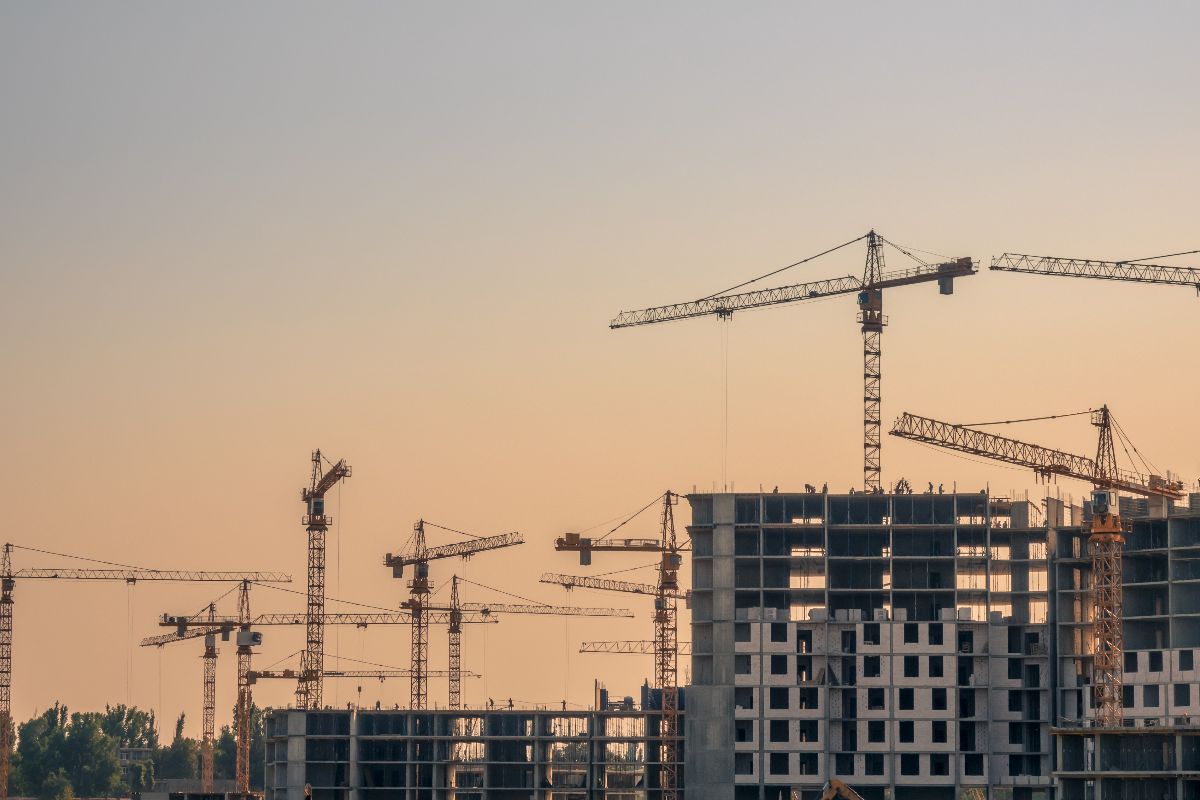
The use of precast concrete has revolutionized traditional construction methods and brought numerous benefits to the current construction industry. For reasons ranging from increased productivity to less environmental impact, precast concrete is causing a sea change in the sector.
This article will explore the causes of the rising popularity of precast concrete and its profound influence on construction techniques.
What is Precast Concrete?
Making structural parts out of precast concrete occurs in a factory rather than on the job site. This method simplifies building construction because the components are delivered and assembled on location. The conventional cast-in-place concrete approach involves constructing buildings from the ground up, while this alternative eliminates that step.
Precast Concrete Process
Extensive preparation and design precede the actual casting of the precast concrete. To shape the concrete into the required components, engineers and architects work together to design exact molds or forms. Pouring concrete into prepared molds and letting it cure in the best possible environment is the next step.
The precast parts are moved to the construction site one by one after hardening and then put together like massive bricks to make the finished structure.
- Design and Mold Creation: Engineers create molds according to the project’s specifications. Steel or fiberglass are common materials for these molds; they are precise and reusable.
- Concrete Pouring: Molds are filled with concrete, which can be cured in a controlled environment after being strengthened with steel bars if needed.
- Demolding: The concrete pieces are removed from their molds when set, exposing their finished form and texture.
- Quality Control: Every precast piece is subjected to thorough quality testing to guarantee structural integrity and conformity with design specifications.
- Transportation and Installation: The building site can place precast parts using cranes and other lifting equipment.
Benefits of Using Precast Concrete
The many advantages of precast concrete make it the material of choice for many different types of building projects:
Accelerated Construction Speed
In the building sector, time is money. Precast concrete provides substantial time savings when compared to traditional techniques of production. Construction activities can parallel site preparation and precast element fabrication, drastically reducing project durations.
Precast components can be placed promptly once delivered to minimize on-site labor needs and avoid weather-related delays. Completing the project more quickly increases overall efficiency, and the built space may be occupied or used sooner, resulting in savings and income.
Cost Efficiency and Economic Viability
The upfront cost of using precast concrete components could be more than that of more conventional methods, but the savings increase throughout the project. Improved project economics and shorter building timetables result from less workforce being needed.
Precast concrete is an economical alternative for building projects due to its longevity and minimal maintenance needs, which add up to savings in the long run.
Design Flexibility and Customization
Architects and engineers can develop unique and aesthetically pleasing structures with precast concrete because of its unequaled design flexibility. Precast concrete can now be made into almost any shape, texture, or color thanks to molding and formwork technology innovations.
Thanks to its adaptability, architects can bring their creative ideas to life while satisfying performance and structural standards, encouraging new forms of architecture, and improving their overall appearance.
Efficiency and Time Savings
The capacity to shorten building durations is a crucial benefit of precast concrete. Construction activities can proceed simultaneously due to the off-site manufacturing of precast parts, which reduces the project’s overall duration.
The production of precast components is possible all year round, regardless of the weather, which further reduces the likelihood of delays and guarantees the project’s continuity.
Enhanced Safety and Quality Control
Precast concrete’s capacity to improve on-site safety and quality control is another significant benefit. This concrete type lowers exposure to hazardous circumstances and inclement weather by moving most building tasks to controlled factory facilities. The process reduces the risk of accidents and injuries for on-site personnel.
Also, precast manufacturing’s standardization and quality assurance standards ensure consistent and reliable finished products, lowering the risk of on-site building flaws, deviations, and inconsistencies.
Environmental Sustainability
In this age of environmentally conscious building techniques, precast concrete stands out as a green alternative. Precast concrete has a lower environmental impact compared to more conventional on-site building techniques because of its reduced energy consumption and carbon gas emissions during production.
In line with green building regulations and certifications, precast concrete’s recyclability and longevity help to lessen the structure’s environmental effects throughout its lifetime.
Improved Insulation and Energy Efficiency
Buildings made of precast concrete have better insulation and use less energy because of their intrinsic thermal mass qualities. By absorbing and storing heat during the day and slowly releasing it at night, the dense composition of precast parts helps manage inside temperatures. This process eliminates the need for mechanical heating and cooling systems.
Incorporating insulating materials into the panel assemblies or using thermal breaks to prevent heat transmission through structural connections are two more ways to maximize the energy performance of precast concrete. Buildings that are more sustainable, environmentally friendly, and economical to run over their lifespan are the outcome of this.
Superior Quality and Consistency
Due to the regulated conditions used in precast concrete production, rigorous quality control methods can be implemented. Components with consistently high quality, exact dimensions, and excellent finishes are the outcome of this process.
Precast concrete reduces the possibility of flaws and future maintenance needs by minimizing the variability associated with on-site casting, ensuring structural integrity and lifespan.
Pave the Way Forward with Precast Concrete
A significant paradigm change has occurred in the building sector with the broad use of precast concrete. Professionals in architecture, engineering, construction, and development all favor it because of its intrinsic benefits in efficiency, quality, cost-effectiveness, and sustainability.
To create a better, more resilient built environment in the future, you must embrace innovation and pursue excellence in construction techniques. Precast concrete is at the vanguard of this movement. If you want to use precast concretes for building construction, check out https://civilmart.com.au/ for high-quality products and services.









